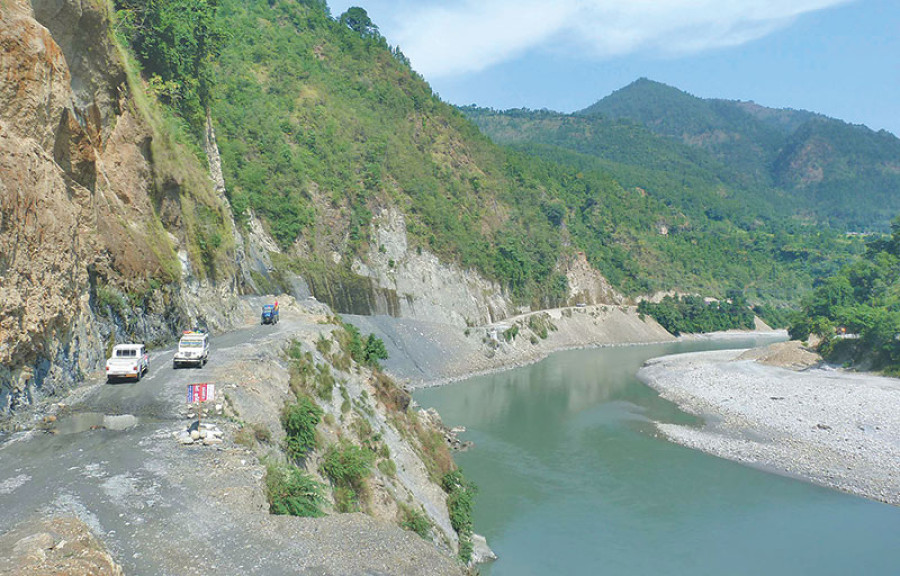Money
Kaligandaki corridor becomes operational
The Kaligandaki Road Corridor—one of the national pride projects—connecting China and India has achieved a major breakthrough with the opening of the most difficult section in Baglung district on Friday.
Ghanshyam Gautam
The Kaligandaki Road Corridor—one of the national pride projects—connecting China and India has achieved a major breakthrough with the opening of the most difficult section in Baglung district on Friday.
The 26 km-section in Baglung carved with stiff rocks was opened by Nepal Army, formally allowing vehicular movement on the 435-kilometre corridor that connects Sunauli in India to Korala border in China, said Lieutenant Colonel Reshmi Raj Bhattarai, chief of Nepal Army’s Road Construction Division.
The road is touted to be a key trading route connecting the southern and northern neighbors. An estimated 1 million people of 10 districts will get direct access to motorable road.
Nepal Army has spent Rs330 million alone to complete the Baglung section-the most treacherous sections this fiscal year.
“Now vehicles will be able to ply on the roads connecting India and China via Palpa, Gulmi, Myagdi and Mustang,” said Bhattarai. “We are about to complete construction of bailey bridges at few places and once such constructions are complete there can be regular vehicular movement.”
The army is currently constructing bailey bridges at Tehule Khola of Baglung and Gaudi Khola of Gulmi. “Inadequate budget had caused difficulties in carrying out the construction work. But the army completed the job taking huge risk,” he said.
By this date, Rs930 million has been spent to open a 85km section and build three bailey bridges. The project still needs Rs120 million, according to Bhattarai.
The army started opening track of 85km section between Ridi of Gulmi to Maldhunga of Baglung in April 2013. Out of 85km section, 40km falls on Gulmi district, while remaining 45 km lies on Baglung.
The road will also play a crucial role to boost the pilgrimage to various destinations like Ramdi, Ranighat, Ruru, Seti Beni, Kagbeni and Muktinath among others.
The 7.5 meter wide road has brought immense changes to the villages as local produces are getting access to the market. “This corridor is the road to prosperity for the people of this region,” said Tikaram Dhakal, local of Kaligandaki Village Council.




 11.12°C Kathmandu
11.12°C Kathmandu















